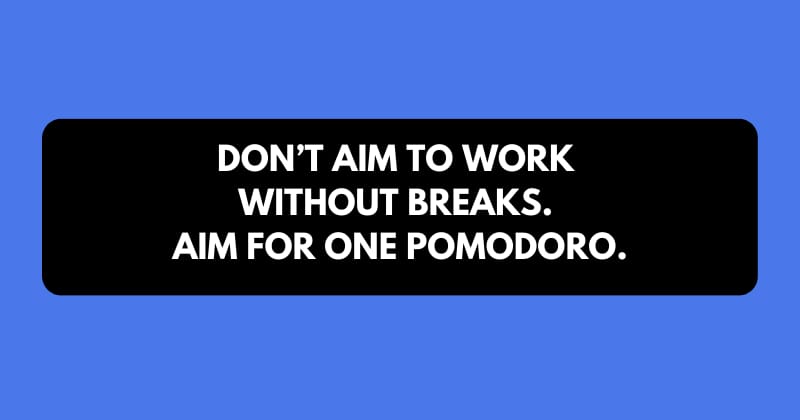Today’s Idea
Most of us overestimate what we can do in one sitting and underestimate what we can do in small bursts. The Pomodoro Technique changes that.
Instead of trying to conquer hours of work in one go, you only commit to 25 minutes. Just long enough to start. Just short enough to finish.
This edition is brought to you by our sponsor:
Turn AI into Your Income Engine
Ready to transform artificial intelligence from a buzzword into your personal revenue generator
HubSpot’s groundbreaking guide "200+ AI-Powered Income Ideas" is your gateway to financial innovation in the digital age.
Inside you'll discover:
A curated collection of 200+ profitable opportunities spanning content creation, e-commerce, gaming, and emerging digital markets—each vetted for real-world potential
Step-by-step implementation guides designed for beginners, making AI accessible regardless of your technical background
Cutting-edge strategies aligned with current market trends, ensuring your ventures stay ahead of the curve
Download your guide today and unlock a future where artificial intelligence powers your success. Your next income stream is waiting.
The Pomodoro Technique
In the late 1980s, Francesco Cirillo, a frustrated university student, sat at his desk staring at a mountain of reading.
He couldn’t concentrate. Every task stretched into hours of distraction.
Out of desperation, he grabbed the only timer in his kitchen (a red, tomato-shaped one) and set it for 25 minutes.
The rules were simple: focus until the bell rings, then take a break.
That was it. Simple work in short, structured bursts.
And it worked.
Cirillo called it the Pomodoro Technique (pomodoro is Italian for tomato). What started as a personal experiment spread quickly through classrooms, offices, and eventually Silicon Valley.
Teams from startups to Fortune 500 companies adopted it because it worked on something universal: our brain resists endless effort, but it can manage short sprints.
Think about it:
Writers use it to get past the blank page.
Developers use it to break down debugging into chunks.
Students use it to prepare for exams without burning out.
Executives use it to carve focus out of meeting-heavy days.
It works not because of the timer, but because of the psychology.
Long sessions trick us into procrastinating as the task feels endless. A 25-minute sprint feels manageable, almost trivial. And once you start, momentum takes over.
How You Can Apply This
If you want to try Pomodoro, don’t overcomplicate it. Start with these steps:
Pick one clear task. Not “work on the project,” but “draft the first page” or “reply to five client emails.” The more specific, the better.
Set a 25-minute timer. Use a kitchen timer, your phone, or a simple app. The physical act of setting it matters.
Focus fully until the bell. No multitasking, no switching tabs. Just the task at hand.
Take a 5-minute break. Stretch, get water, look out a window. Let your brain reset.
Repeat. After four rounds, give yourself a longer break—15 to 30 minutes.
Here’s a practical script for your day:
Morning: 4 pomodoros (≈ 2 hours focused work)
Afternoon: 4 pomodoros (another 2 hours)
Evening: leave the rest for admin, calls, or lighter tasks
That’s only 8 pomodoros, yet it adds up to 4 hours of real focus, more than most people get in an entire day of distracted busyness.
What To Remember

Until next time,
— Quiet Moves
